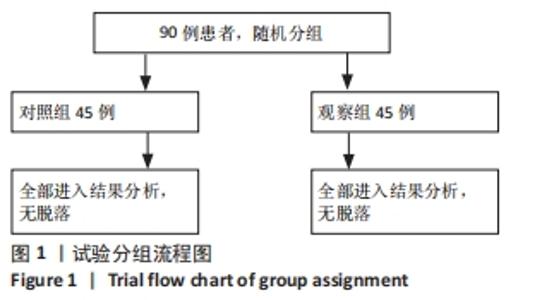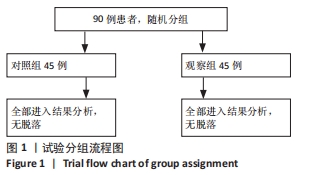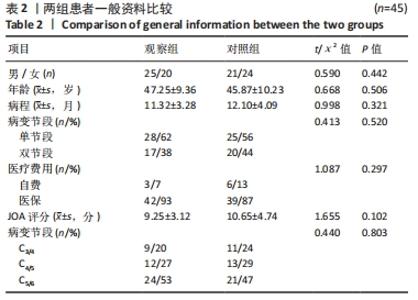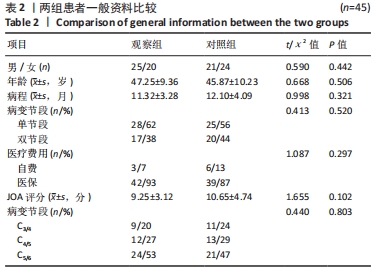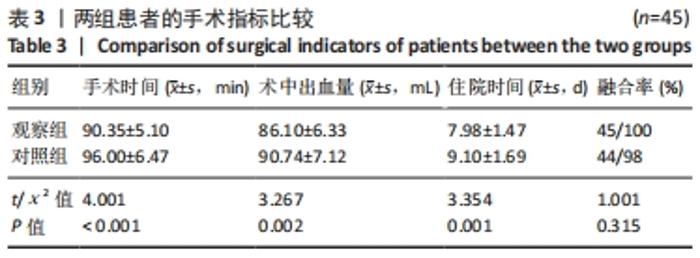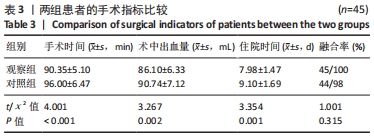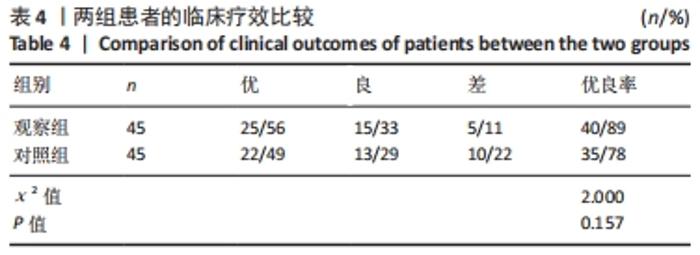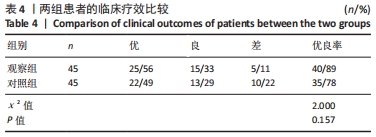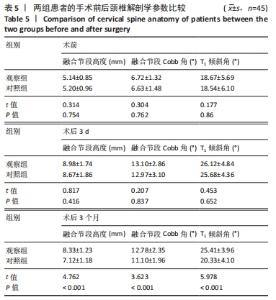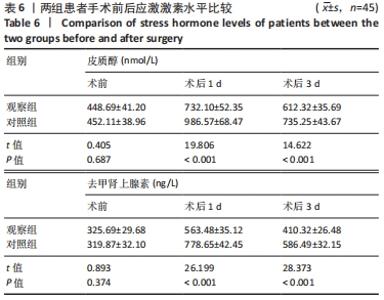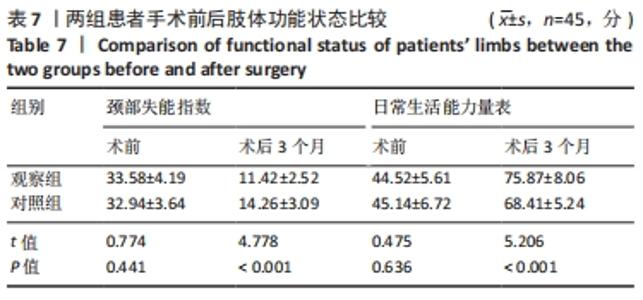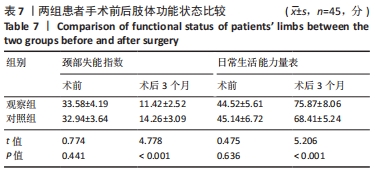[1] 沈宝良,沈洪兴,陈智,等.双小切口前路颈椎椎间盘切除融合术治疗连续4节段脊髓型颈椎病[J].脊柱外科杂志,2020,18(1):19-23,57.
[2] ZHANG T, GUO N, GAO G, et al. Comparison of outcomes between Zero-p implant and anterior cervical plate interbody fusion systems for anterior cervical decompression and fusion: a systematic review and meta-analysis of randomized controlled trials. J Orthop Surg Res. 2022;17(1):47.
[3] 师瑞宁,杨诗卉,张静洁,等.不同制备工艺聚醚醚酮及其复合材料的力学性能研究进展[J].现代口腔医学杂志,2021,35(5):338-342.
[4] 刘正蓬,王雅辉,张义龙,等. 3D打印椎间融合器置入治疗脊髓型颈椎病:颈椎曲度及椎间高度恢复的半年随访[J]. 中国组织工程研究,2021,25(6):849-853.
[5] SHARMA A, KISHORE H, SINGH V, et al. Comparative Study of Functional Outcome of Anterior Cervical Decompression and Interbody Fusion With Tricortical Stand-Alone Iliac Crest Autograft Versus Stand-Alone Polyetheretherketone Cage in Cervical Spondylotic Myelopathy. Global Spine J. 2018;8(8):860-865.
[6] LEVASSEUR CM, PITCAIRN S, SHAW J, et al. The effects of age, pathology, and fusion on cervical neural foramen area. J Orthop Res. 2021;39(3):671-679.
[7] THACI B, YEE R, KIM K, et al. Cost-Effectiveness of Peptide Enhanced Bone Graft i-Factor versus Use of Local Autologous Bone in Anterior Cervical Discectomy and Fusion Surgery. Clinicoecon Outcomes Res. 2021;9(24):681-691.
[8] 周广福,朱伟民,唐本森,等.3D打印技术在髋关节置换术后感染Ⅱ期翻修手术中应用[J].重庆医学,2018,47(13):1746-1748.
[9] LOUVRIER A, MARTY P, BARRABÉ A, et al. How useful is 3D printing in maxillofacial surgery? J Stomatol Oral Maxillofac Surg. 2017;118(4): 206-212.
[10] PEHDE CE, BENNETT J, LEE PECK B, et al. Development of a 3-D Printing Laboratory for Foot and Ankle Applications. Clin Podiatr Med Surg. 2020;37(2):195-213.
[11] 王志强,冯皓宇,马迅,等.3D打印人工椎体及椎间融合器在颈椎前路手术中应用的临床效果[J].中国修复重建外科杂志,2021,35(9): 1147-1154.
[12] SHOUSHA M, ALHASHASH M, ALLOUCH H, et al. Reoperation rate after anterior cervical discectomy and fusion using standalone cages in degenerative disease:a study of 2,078 cases. Spine J. 2019;19(12): 2007-2012.
[13] MURPHY SV, DE COPPI P, ATALA A. Opportunities and challenges of translational 3D bioprinting. Nat Biomed Eng. 2020;4(4):370-380.
[14] SUN Z, LEE SY. A systematic review of 3-D printing in cardiovascular and cerebrovascular diseases. Anatol J Cardiol. 2017;17(6):423-435.
[15] 栗向东,黄海,石磊,等.3D打印个体化人工椎体重建胸腰椎骨巨细胞瘤整块切除后脊柱的稳定性[J].中国脊柱脊髓杂志,2020, 30(9):797-803,819.
[16] 程文俊,王俊文,焦竞,等.3D打印钛合金骨小梁金属臼杯在初次全髋关节置换术应用的临床和影像学评估:5年临床随访[J].中华创伤骨科杂志,2018,20(12):1066-1071.
[17] 杨佳,杨毅,赵云宏,等.应用3D打印技术联合组配式S-ROM假体人工髋关节置换术治疗成人CroweⅣDDH[J].昆明医科大学学报, 2018,39(5):83-89.
[18] GOLDSMITH I, EVANS PL, GOODRUM H, et al. Chest wall reconstruction with an anatomically designed 3-D printed titanium ribs and hemi-sternum implant. 3D Print Med. 2020;6(1):26.
[19] MOBBS RJ, CHOY WJ, SINGH T, et al. Three-Dimensional Planning and Patient-Specific Drill Guides for Repair of Spondylolysis/L5 Pars Defect. World Neurosurg. 2019;9(132):75-80.
[20] AMELOT A, COLMAN M, LORET JE. Vertebral body replacement using patient-specific three-dimensional-printed polymer implants in cervical spondylotic myelopathy: an encouraging preliminary report. Spine J. 2018;18(5):892-899.
[21] KIM J, RAJADURAI J, CHOY WJ, et al. Three-Dimensional Patient-Specific Guides for Intraoperative Navigation for Cortical Screw Trajectory Pedicle Fixation. World Neurosurg. 2019;10(122):674-679.
[22] 任捷,吕智.3D打印个性化腰椎融合器设计及生物力学性能研究分析[J].中国骨伤,2021,34(8):764-769.
[23] CHUNG SS, LEE KJ, KWON YB, et al. Characteristics and Efficacy of a New 3-Dimensional Printed Mesh Structure Titanium Alloy Spacer for Posterior Lumbar Interbody Fusion. Orthopedics. 2017;40(5):880-885.
[24] MCGILVRAY KC, EASLEY J, SEIM HB, et al. Bony ingrowth potential of 3D-printed porous titanium alloy: a direct comparison of interbody cage materials in an in vivo ovine lumbar fusion model. Spine J. 2018; 18(7):1250-1260.
[25] ZHANG D, QIU D, GIBSON MA, et al. Additive manufacturing of ultrafine-grained high-strength titanium alloys. Nature. 2019;576(7785):91-95.
[26] 王建华,吴迪,孙贺,等.颈椎前路减压3D打印椎间融合器融合内固定术对颈椎矢状位参数的影响[J].中国脊柱脊髓杂志,2021, 31(4):324-330.
[27] 鲁晨,陶璐,项闫颜,等.聚醚醚酮改性及在口腔种植领域的应用研究[J].实用口腔医学杂志,2020,36(5):819-824.
[28] MCGAFFEY M, ZUR LINDEN A, BACHYNSKI N, et al. Manual polishing of 3D printed metals produced by laser powder bed fusion reduces biofilm formation. PLoS One. 2019;14(2):e0212995.
[29] 冯逢,顾立学.冠状动脉支架植入术后应用氯吡格雷对患者焦虑、抑郁、应对方式等应激反应影响的临床研究[J].陕西医学杂志, 2021,50(1):58-61.
[30] 高顺恒,吴梦溪,王志萍.肾上腺素、去甲肾上腺素以及甲氧明对低氧性肺动脉高压模型大鼠肺动脉张力的影响[J].国际麻醉学与复苏杂志,2020,41(10):929-932.
[31] PARK JH, BAE YK, SUH SW, et al. Efficacy of cortico/cancellous composite allograft in treatment of cervical spondylosis. Medicine (Baltimore). 2017;96(33):7803.
[32] 吕晶,吴茜,陈向东,等.地塞米松复合右美托咪定对罗哌卡因臂丛神经阻滞效果和血浆皮质醇的影响[J].临床麻醉学杂志,2020, 36(9):842-846.
|
